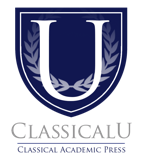Back to Course
Leading with the Liberal Arts: A Classical Framework for School Leadership
0% Complete
0/0 Steps
-
INTRODUCTION TO CLASSICAL EDUCATION
Lecture 1: A Clear Definition of Classical Education5 Topics|1 Quiz -
Lecture 2: Why Classical Education?4 Topics|1 Quiz
-
THE SEVEN LIBERAL ARTSLecture 3: The Seven Liberating Arts3 Topics|1 Quiz
-
Lecture 4: The History of the Seven Liberal Arts3 Topics|1 Quiz
-
ESSENTIAL SCHOOL LEADERSHIPLecture 5: An Overview of Essential School Leadership3 Topics|1 Quiz
-
Lecture 6: Vision3 Topics|1 Quiz
-
Lecture 7: Strategy3 Topics|1 Quiz
-
Lecture 8: Finding and Growing Talent3 Topics|1 Quiz
-
Lecture 9: School Culture (Part 1)2 Topics|1 Quiz
-
Lecture 10: School Culture (Part 2)2 Topics|1 Quiz
-
Lecture 11: Working with Your School Board (Part 1)3 Topics|1 Quiz
-
Lecture 12: Working with Your School Board (Part 2)2 Topics|1 Quiz
-
Lecture 13: School Finances2 Topics|1 Quiz
Lesson 3,
Topic 3
In Progress
Discussion Questions
Lesson Progress
0% Complete
- Without truth, a human mind is bound. The seven liberal arts set students free from their bindings. Have you ever witnessed one of your students have an “Aha!” or “Light-bulb” moment in the classroom? How did these moments set the student free?
- The ultimate goal of a liberal arts education is to harmonize the thoughts of children, humans, communities, and the cosmos. How will instilling this harmony in your students prepare them for life beyond the classroom (in college or vocational school, in their future communities, and in their relationships with God)?


